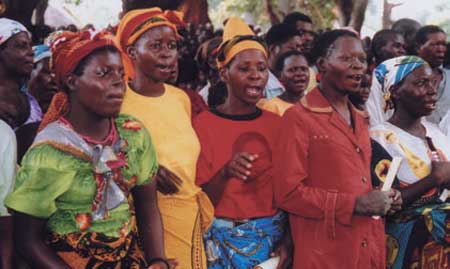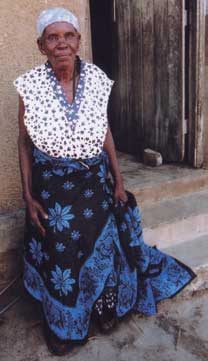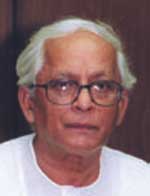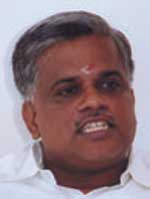|
AMBASSADOR'S JOURNAL
Journeys to Africa and India
Poverty and discrimination remain powerful foes, as visits to Mozambique and Tanzania show; while in India, workshops focus on human rights.
MOZAMBIQUE (APRIL 20-24)
Mozambique has been developing slowly since the end of its 20-year-long civil war in 1992, but it remains one of the world's poorest nations. Over half the 17-million population lives in abject poverty and the country is battling a number of diseases that impact its social and economic development.
Where leprosy is concerned, Mozambique's PR is still rather high (2.5/10,000) compared to other countries, such as Brazil or India, that have yet to achieve elimination.
On arrival in Maputo, I received a briefing from Dr. Bokar Toure, the WHO country representative; Alfredo MacArthur, the health ministry's leprosy and TB countermeasures manager; and Alcino Ndeve, advisor on leprosy to the health ministry. As there had been an election the previous December, they weren't able to give me full details of the new government's public health strategy, as it was still being finalized. But they assured me that leprosy elimination would remain a high priority, as it had been under the previous administration. This was reiterated by the new health minister, Dr. Ivo Garrido, when I met him.
The northern and central parts of Mozambique, home to 60% of the population, are hardest hit by leprosy. There is only 30% health services coverage in these areas, and a lack of health workers trained in the treatment and diagnosis of leprosy.
When I visited Mozambique in 2002, I traveled to two provinces in the north of the country, Nampula and Cabo Delgado, with the highest PRs, so I was interested to make a return visit to Nampula to see the progress it has been making.
In 2002, there were parts of Nampula where the PR was above 10 and even as high as 20 in some places. Today, the province-wide PR stands at 4.9. Since it is Mozambique's most densely populated province, it needs to make more progress if Mozambique is to achieve elimination.
From Nampula City, the provincial capital, I drove to the village of Namaita, about 40 kilometers away. I attended a festival promoting leprosy awareness; visited an agricultural cooperative jointly supported by ADEMO, an organization for disabled people, and ALEMO, an organization of recovered persons (these groups also run a shoe workshop in Nampula City that I visited later in the day); and donated 150 bicycles to a health center for the use of volunteer leprosy workers. I met a number of the volunteers during this visit, including recovered persons whose blue T-shirts bore the words, “I once had leprosy, but now I'm cured.”
Back in Maputo, Dr. Garrido said that unfortunately it would not be possible for Mozambique to achieve elimination by the end of 2005, but said he would be organizing a meeting of governors of the most endemic provinces to work out a strategy for a final push. I understand this strategy will involve not just the health ministry but other ministries, such as the education ministry, as well as the ruling party. I intend to consult with the WHO and other partners to help Mozambique achieve the goal as soon as it can.

Festivals such as this one in Namaita offer an opportunity to communicate important messages about leprosy. |
Products grown and produced by recovered persons with the support of ADEMO and ALEMO, self-help organizations for the disabled and those recovered from leprosy. |
Meeting with volunteer leprosy workers |
TANZANIA (April 24-28)
From Mozambique I traveled to Tanzania. With a population of some 36 million, it has a PR of1.3 and is closing in on elimination. Its TB and leprosy programs have been combined, and it has some of the best geographic coverage and integration in the region.
During a welcome dinner, Health Minister Anna Abdallah told me, “My father had leprosy.”She said that after she mentioned this in public for the first time, she soon received a phone call from her brother. “Is it true that you spoke about this?” he asked. “Yes,” she replied, “Is it not true?”
In a country such as Tanzania, where stigma and discrimination toward those with leprosy remain strong, I believe it was very courageous of the minister to speak out in this manner. Indeed, the minister told me that in eliminating leprosy, she wanted to eliminate “the number one problem associated with it, which is discrimination.” From the standpoint of leprosy elimination, I can't think of anyone more suited to be health minister than Mrs. Abdallah.
The next day, I visited the WHO office and the health ministry, where I was updated on the progress of elimination. In 1983, Tanzania had 35,000 leprosy cases; in 2004, the number stood at 5,600. Over the same period, the PR has fallen from 12 to 1.3, due particularly to the concerted work done from 1998. The relationship between the government and NGOs, among them the German Leprosy and TB Relief Association (GLRA), is also very good, and WHO endorses Tanzania's efforts as an example to all of Africa.
Tasks remain, however. Ten percent of newly detected cases present with Grade II disability *, indicating that stigma and social discrimination discourage people from seeking treatment. Training of health center staff needs to be strengthened, so all are capable of diagnosing leprosy correctly. In addition, people cured of the disease continue to live in settlements, together with their children, who grow up thinking of themselves as leprosy-affected.
While in Dar Es Salaam, I visited the Mbagala dispensary, where the disability rate among new patients was 13%, and also a long-term care facility for persons affected by leprosy, disabled people and the elderly at Nunge.
Next I traveled to the capital, Dodoma, for a meeting with President Mkapa. He told me that until he received a briefing ahead of my visit, he never thought of leprosy as a problem he needed to associate himself with as president. “Thanks to your visit, I have come to know my country better,” he said. He remarked that there is an expression in Tanzania, “to be avoided like leprosy,” which is often used by politicians in reference to something they want nothing to do with. In other words, it showed the extent to which the disease was feared and disliked in the country. The president promised that he would help to promote correct information about leprosy.
President Benjamin Mkapa of Tanzania
On the return journey to Dar Es Salaam, I stopped off at a care center in Chazi in the Morogoro region. There are about 40 leprosy-affected persons living in this former sanatorium; others have moved into the local community, with GLRA helping to assist in the transition.
Tanzania still faces challenges, particularly in overcoming discrimination and tackling disability. But given the enthusiasm and determination of the minister and others concerned, I'm sure elimination will not be long in coming.

Elderly resident of Nunge settlement, Dar Es Salaam |
INDIA (May 12-17)
Leaders of Tamil Nadu's leprosy colonies gather for a monthly meeting at the Villivakkam colony. |
In May, I went to Kolkata in West Bengal, and Chennai in Tamil Nadu.
In Kolkata I attended a consultation on Advocacy Strategy and Role of Media in Elimination of Leprosy. Similar meetings have already been held in Delhi, Bihar, Maharashtra, Orissa and Uttar Pradesh. All have been organized by the International Leprosy Union (ILU). The latest meeting was well covered by the media, with some 20 newspapers running stories.
During the conference, I met with West Bengal's chief minister, Shri Buddhadeb Bhattacharjee, and health and family welfare minister, Dr. Surya Kanta Misra. “I assure you that we are trying our best to eradicate leprosy from our state,” the chief minister told me.
While in Kolkata, I visited a bloc health center in nearby Howrah, and was impressed by a ventriloquist, who conducted a question-and-answer session on leprosy with a monkey dummy.
In Chennai, I took part in a Regional Conference on Leprosy, co-hosted by IDEA India, the Leprosy Elimination Alliance and Hind Kusht Nivaran Sangh (TN) and involving participants from the four southern Indian states of Kerala, Karnataka, Andhra Pradesh and Tamil Nadu.
At one point, these four states formed the region with the highest PR in India; now all of them have achieved elimination at the state level. Opening the conference, Tamil Nadu's health minister, Thiru N. Thalavai Sundaram, said the reduction in the number of registered cases in his state from 800,000 to just 5,300 was no reason to relax, and said elimination activities must be sustained.
The second day focused on discrimination. India still has various laws that are problematic from a human rights perspective, often based on the erroneous premise that leprosy is incurable. Most are said to date back to when
the country was part of the British Empire.
One presentation showed how an influential medium such as cinema can propagate false notions, using the example of Blood Tear, a 1960s hit film re-released last year. At the end of the film, the main character ― something of a playboy ― contracts leprosy, and this is presented as divine justice. Needless to say, such a scenario has no basis in fact.
During my stay in Chennai, I traveled to nearby Chengalpattu, home of the Central Leprosy Teaching and Research Institute. I also visited the Paranur Government Leprosy Home, formerly the Leprosy Beggars' Rehabilitation Home. Once, when Mahatma Gandhi alighted at Chengalpattu station to worship at a nearby temple, leprosy patients streamed to the station to catch a glimpse of him. Gandhi would later remark that he had been going to see God, but instead God came to him.
The last place I visited was Villivakkam Leprosy Colony. My visit coincided with a monthly meeting of leaders of 48 leprosy colonies in Tamil Nadu. I told the 200 people attending, “You recovered persons are the main actors in the fight to eliminate leprosy and eradicate discrimination. It is important that you lead from the front!”


(Top) West Bengal Chief Minister Bhattacharjee,
(above) Health Minister Sundaram of Tamil Nadu |
Reference
*WHO grading system to measure levels of disability from 0 to II
Leprosy LEXICON
● Sustainability
The capacity of a program
to maintain quality and coverage at a level that will provide continuing control and further reduction of a health problem at a cost that is affordable to the program and the community. (WHO Global Strategy for Further Reducing the Leprosy Burden and Sustaining Leprosy Control Activities 2006-2010)
|